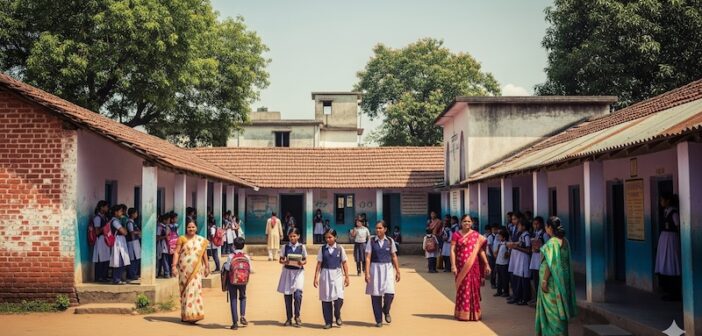TL; DR: UDISE+ 2024-25 shows India’s education system is vast and shifting: 1 crore teachers, 15 lakh schools, 24 crore students. Government schools outnumber private ones but attract fewer kids. Dropout rates are at a decade low. While progress is visible, gaps remain.
Context:
India’s classrooms tell a story of both progress and persistent gaps. More than 24 crore children walk into classrooms across 15 lakh schools in India, guided by nearly 1 crore teachers, a scale unmatched anywhere in the world. But behind these big numbers lie everyday stories of access, gaps, and opportunities that shape the future of millions.
The UDISE+ 2024-25 report offers a detailed picture of not just how many children are in school, but the conditions in which they learn, the resources available, and the disparities shaping educational outcomes.
Who compiles this data?
The data is compiled by the Department of School Education & Literacy (DoSE&L) through the Unified District Information System for Education Plus (UDISE+), developed in 2018-19. Schools with active UDISE+ codes voluntarily upload their information, and since 2022-23, all data fields are fully aligned with National Education Policy 2020.
Where can I download clean & structured data related to UDISE+ statistics?
Clean, structured, and ready-to-use datasets on School education statistics from UDISE+ in India can be downloaded from Dataful. This covers enrolment by school type and level, number of schools by management, teacher strength, and key performance indicators like dropout, retention, and promotion rates.
Key Insights:
- One Crore Teachers in India: For the first time ever, India has over 1 crore teachers. Half are in government schools, nearly 40% in private ones.
- More Government schools, fewer enrolments: Of the 15 Lakh schools in India across all managements, government schools dominate the landscape, making up 70% of them.
- However, government schools account for less than half (49%) of the students, while private schools, with just 21% of the total number of schools, are educating nearly 39% students.
- Fewer Children leaving the schools behind: For all the worries about children dropping out, the latest UDISE+ numbers bring good news. In 2024-25, dropout rates fell to just 0.3% in primary and 11.5% in secondary, the lowest in nearly a decade. More children are staying the course, and fewer children are slipping through the cracks.
Why does it matter?
The UDISE+ 2024-25 numbers show us where India is gaining ground, like lower dropout rates and where gaps remain, such as declining trust in government schools. These numbers remind us that progress is real, but uneven. Who teaches, where children enrol, and whether they stay in school determines not just their futures, but the country’s.
Key numbers:
- Distribution of teachers by type of school (in Lakhs)
- Government: 2016-17: (49.9), 2020-21: (49.3), 2024-25: (51.5)
- Private: 2016-17: (28.0), 2020-21: (36.5), 2024-25: (39.6)
- Distribution of Schools by type of school (in Lakhs)
- Government: 2016-17: (11.0), 2020-21: (10.3), 2024-25: (10.1)
- Private: 2016-17: (2.9), 2020-21: (3.4), 2024-25: (3.39)
- Distribution of Enrolment by type of school (in Lakhs)
- Government: 2016-17: (1372), 2020-21: (1349), 2024-25: (1216)
- Private: 2016-17: (805), 2020-21: (951), 2024-25: (958)



